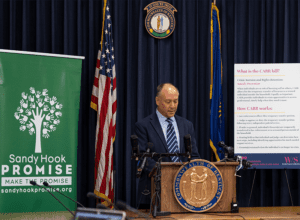Rates of youth suicide have been steadily increasing. One in four young adults1 has considered suicide since the pandemic began. And a recent survey found that seven in 10 teenagers2 are struggling with mental health, with more than two-thirds feeling pressure to hide their true feelings and deal with their problems on their own.
It’s more important than ever to recognize the warning signs of suicide, act immediately, take it seriously, and get help before it’s too late. Learn about our Prevent Suicide training.
Warning Signs of Youth Suicide
Warning signs3 that a youth may be experiencing suicidal thoughts include:
- Talking about wanting to die, be dead, or suicide, or they are cutting or burning themselves.
- Feeling like things may never get better, seeming like they are in terrible emotional pain (like something is wrong deep inside but they can’t make it go away), or they are struggling to deal with a big loss in their life.
- Your gut is telling you to be worried because they have withdrawn, become more anxious or on edge, seem unusually angry, or just don’t seem “normal” to you.
For more tips on how to respond when seeing warning signs of suicide in a young person or those your child or student is seeing in others, watch our training video and get resources.
Risk Factors* That Can Contribute to Suicidal Thoughts
Be especially vigilant for warning signs from anyone exhibiting any of the following:
- Having thoughts of suicide or past attempts
- Engaging in self-harm like cutting or burning
- Dealing with depression, anxiety, or severe emotional distress
- Experiencing prejudice, discrimination, or pressure to be someone they are not
- Abusing drugs or alcohol
- Patterns of highly aggressive or illegal behaviors
- Having access to or talking about lethal means like firearms
* Note: kids may experience all of these and not have suicidal thoughts… or none of these and be suicidal. These are only guidelines. If you are concerned, take action and get help.
For Immediate Support
- National Suicide Lifeline, Call or Text: 988
- Emergencies: call 911
How You Can Help
The STANDUP Act expands access to evidence-based suicide prevention training to every 6th-12th grade student. Together with their peers, youth would learn how to recognize the warning signs of self-harm. What’s more, they are taught methods on how to seek help for themselves and others. With our sister organization, Sandy Hook Promise Action Fund, this law was recently passed and signed into law.


